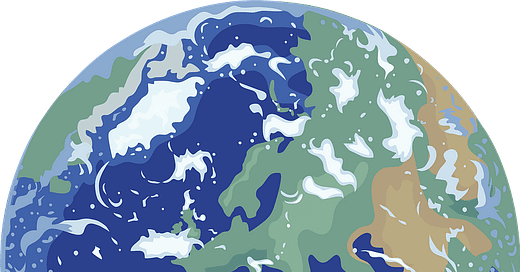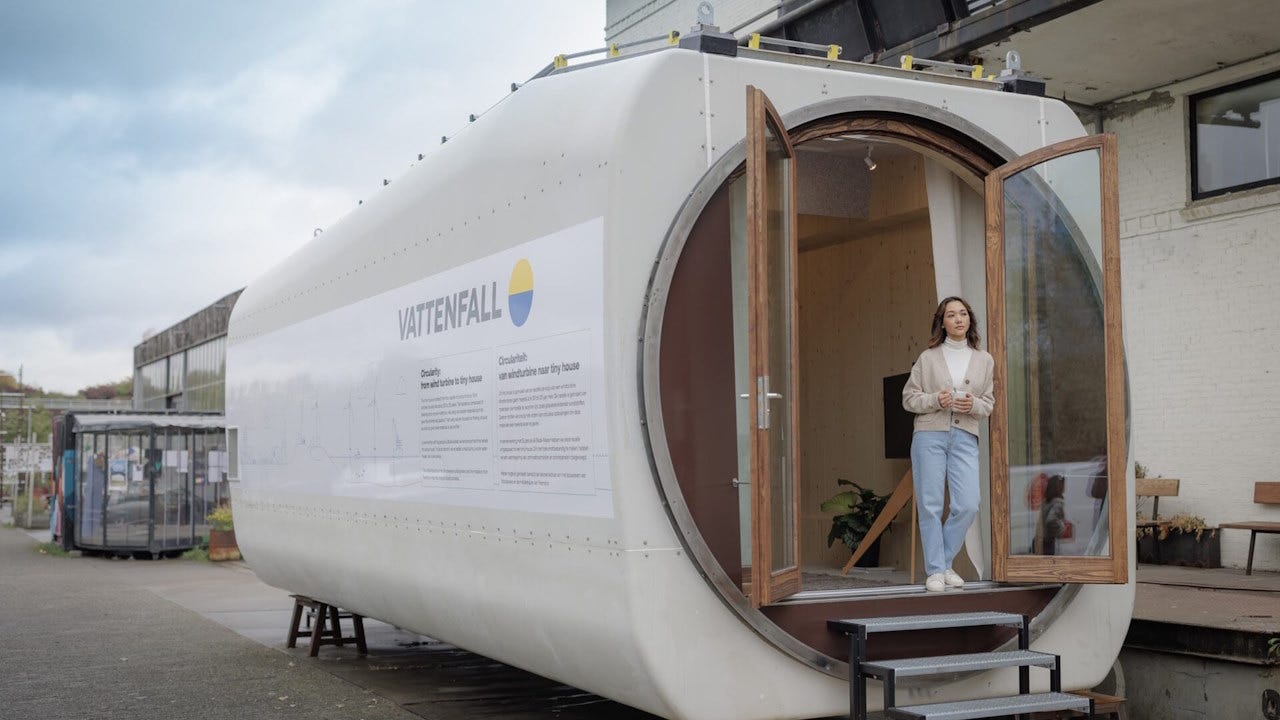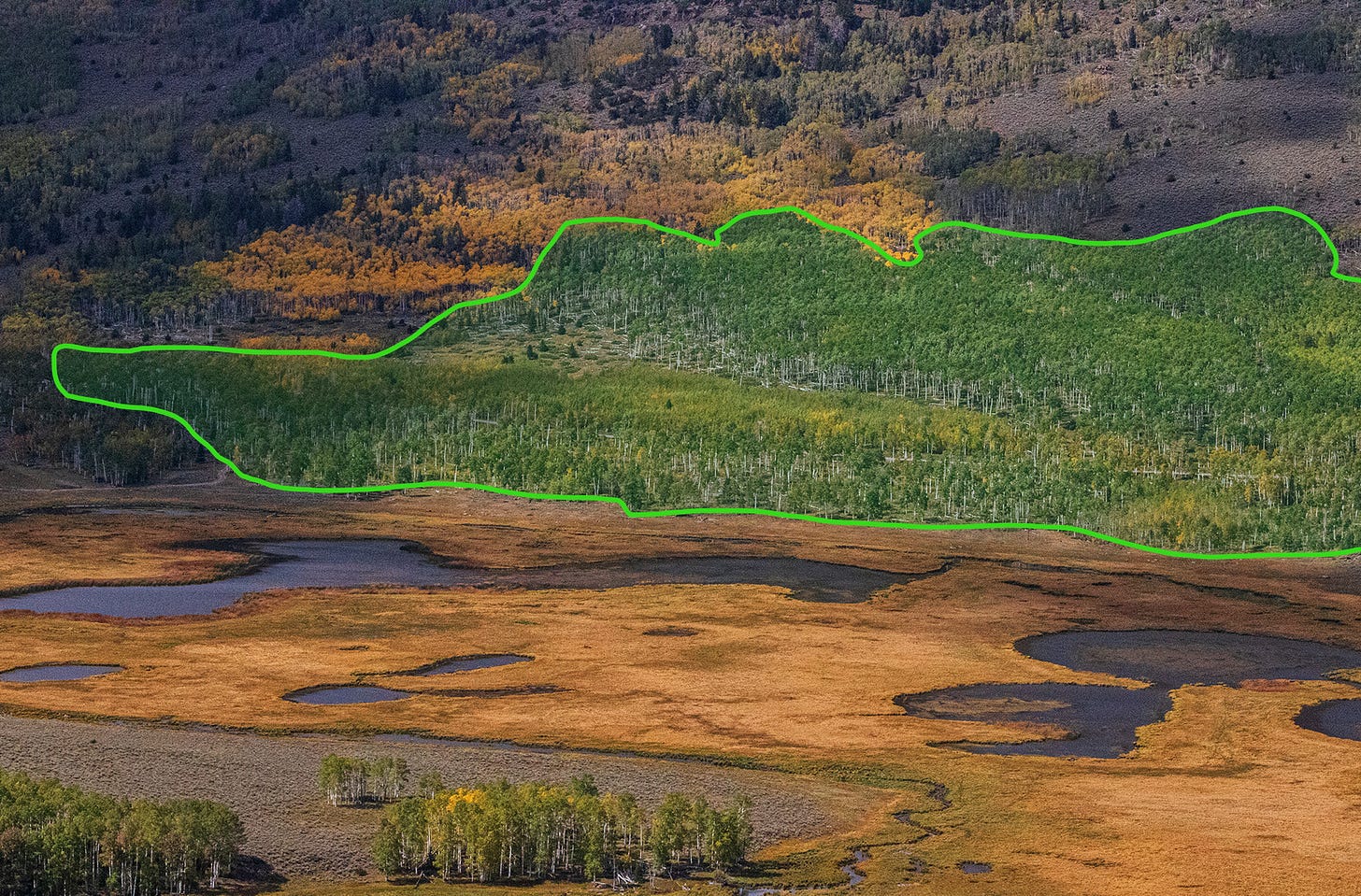The Weekly Anthropocene, November 6 2024
The 2024 U.S. Election; results as of this morning. Plus a wind turbine nacelle tiny house, Philippine eagles, a new species of ghost shark, the Clean Ports Program, Pando of Utah, and more.
The 2024 U.S. Election
At the time of writing, just after 2 AM on November 6, 2024, it appears agonizingly probable that the American people have elected a manifestly corrupt and horrifyingly depraved individual to one of the most powerful offices on Earth. It seems that the political party that has bent to that man’s will has gained control of the United States Senate, and that the United States House of Representatives may follow.
There’s no sugarcoating how bad this is. The next four years will likely be a profoundly chaotic and scary time in many ways. Bad things will happen. People will suffer. It really sucks.
I am afraid.
It’s also not the end of the world. That phrase has entered our parlance as a dismissive minimization, but it’s a simple statement of fact. The world is a very, very big and complex place, too big to be contained or even summarized by the most gigantic of events or seemingly all-consuming of trends. Many great and terrible things can be happening simultaneously on overlapping timescales. The twentieth century saw the hideous atrocities of the World Wars and Cold War, and also witnessed unprecedented technological innovation and massive improvements in public health, civil rights, and human living standards.
Even as American politics descend into darkness - at least for a time - many ongoing trends outside the control of voters will continue to strive to make a better world for humanity and its biosphere.
Solar power will keep getting cheaper and keep being built more and more across the world, transitioning humanity’s energy system to run on clean electrons faster than almost anyone believed possible.
Researchers are finding that solar farms can benefit desert ecosystems.
Battery technology is just beginning an incredible Cambrian explosion of diversification and innovation. We’ve been using carbon as our main energy storage molecule for centuries, and now we’re exploring the rest of the periodic table. The renewables revolution is just getting started.
Enhanced geothermal technology is poised for a massive breakout, hopefully bringing a new solar-level clean-electron champion into the fray to accelerate cleaner air and slow climate change.
Global energy-related carbon dioxide emissions are set to peak in 2024 or 2025.
The World Grid is being built, high-voltage power line by high-voltage power line.
GLP-1 agonists will continue to transform healthcare, offering the hope of mass progress against maladies ranging from obesity to addiction.
The new malaria vaccines will save tens of thousands of children in sub-Saharan Africa from agonizing, pointless deaths, and mRNA vaccine technology writ large have the potential to vanquish many ancient diseases in our lifetimes.
Ordinary public health measures from water filtration to indoor plumbing continue to spread, improving quality of life for millions.
Access to electricity continues to advance, with renewable energy set to speed Africa to electrify faster than expected.
Digital connection bringing advanced warning of extreme weather events has caused the global number of deaths from natural disasters to decline sharply even as the atmosphere grows more turbulent.
Humanity’s understanding of the universe will continue to grow, with amazing new discoveries in fields from galactography to genetics.
Brilliant new inventions like precision fermentation, microtargeted fertilizer-applying drones, climate-resilient crops like “short corn,” farm bots, methane-eating microorganisms, and more will continue their unheralded transformation of farming, ensuring a historically abundant food supply and reducing environmental damagement even amidst climate disruption.
Dedicated conservationists will continue to work tirelessly to help wildlife populations rebound around the world, and perhaps soon de-extinct some species once thought to be lost forever.
People all over the nation and the world will care for their loved ones. They will be kind to the humans and animals they encounter. They will shelter and protect those who are unjustly persecuted. They will work, dream, imagine, create, inspire, seek, explore, hope. They will do what they can to make their facets of the world better places to live in. In times of horror, we can still be good and true.
The Weekly Anthropocene will continue its work. Stay tuned.
Netherlands
An end-of-life Vattenfall wind turbine nacelle was rebuilt into a tiny house (fully furnished and equipped with a heat pump, solar panels, and solar water heater) as a showcase for Dutch Design Week. The nacelle was previously in service for 20 years as part of a 2 MW wind turbine in Austria. Nice work!
Philippines
The Philippine eagle (Pithecophaga jefferyi) is a majestic titan of the skies, standing up to 1 meter tall with a wingspan of 2 meters. A single individual can range over a vast territory, about 4,000 hectares of forest. It’s also one of the rarest birds of prey in the world, considered critically endangered with an estimated 400 pairs left in the wild.
An Indigenous-led eagle protection effort has been vital in keeping the species alive in recent decades, and continues to grow its community-rooted conservation leadership. Chieftain Datu Julito Ahao of the Obu Manuvu people on the island of Mindanao has dedicated his life to the Philippine eagle, leading the Bantay Bukid community forest guard to watch over wild individuals, scouting for nesting sites, and helping establish a breeding program that has hatched 29 eagles in captivity. Spectacular work!
New Zealand
Scientists have discovered a new species of ghost shark (aka chimaera, rabbitfish, or spookfish, an ancient lineage of deepwater cartilaginous fishes related to but long distinct from sharks and rays) in Chatham Rise waters off New Zealand. The new species has been named the Australasian narrow-nosed spookfish (Harriotta avia), lives on the ocean floor at depths of over 1.5 miles and has large eyes, a long nose, and chocolate-brown coloration. Like other chimaeras, it has smooth scale-less skin and eats seafloor crustaceans. Our shared biosphere continues to surprise!
Japan
A SpaceX rocket has successfully launched Kyoto University’s LignoSat, the world’s first satellite made from wood. In the void of space, the wood won’t be vulnerable to rot or fire - but when it deorbits in the future, it’ll burn up in the atmosphere without releasing metal particles.
After the Fukushima incident of 2011, Japan closed all its nuclear plants, but since 2015 it’s been gradually reopening them. (Which is a wise move on safety grounds alone, as very rare nuclear disasters kill far fewer people than air-polluting fossil fuel plants functioning normally). The U.S. EIA reports that as of 2022, Japan’s reopening of 11 gigawatts of nuclear had reduced liquified natural gas imports by 1.7 billion cubic feet per day from 2015 to 2022 - and Japan has reopened more nuclear since then. Another great example of why we should reopen nuclear plants where we can - we need all the clean electrons we can get!
A University of Tokyo research team successfully induced red algae-derived chloroplasts, the organelle that performs synthesis in plant cells, to function for a while within lab-cultured animal (hamster) cells. A potential first step to true “planimal” cells sometime in the future! Fascinating work.
United States
On October 29, 2024, President Biden announced nearly $3 billion in 55 new grants from the U.S. EPA’s Inflation Reduction Act-funded Clean Ports Program, reducing pollution and deploying cleantech at ports across America. The 55 new grants go out to ports across 27 states and territories from Guam to Georgia and Pennsylvania to Puerto Rico, and include 30 Climate and Air Quality Planning (CAQP) grants plus 25 Zero-Emission Technology Deployment (ZE Tech) grants. Together, they will eliminate an estimated 3 million metric tons of carbon pollution per year, equivalent to the energy use of 391,220 homes, while protecting local communities from air pollution.

Here are some highlights:
$21.9 million for solar arrays plus battery-electric boats and cargo equipment at the port of Detroit.
$48.7 million for the ports of Savannah and Brunswick in Georgia to allow ships to plug in to grid power instead of relying on diesel.
$77.6 million for zero-emission cargo handling equipment at the Philadelphia Regional Port Authority.
$344 million for the Port Authority of New York and New Jersey to invest in electric trucks, cargo handling equipment, and shore infrastructure.
Again, the Inflation Reduction Act-funded U.S. cleantech boom delivers! The Biden-Harris Administration will leave a legacy across the nation of cleaner air, upgraded infrastructure, and more functional systems in general, continuing to serve the American people for decades into the future.
A federal auction for offshore wind leases in the Gulf of Maine brought in $21.9 million in bids, with four leases sold to enable the building of up to 6.8 GW (6,800 MW) of future power generating capacity. Impressively high figures, particularly for a part of the ocean that would likely require floating offshore wind technology (still relatively new in the U.S.) for offshore wind farms to be developed. We’ll see.
Pando is a giant quaking aspen (Populus tremuloides) tree with 47,000 trunks covering 42.6 hectares in the Fishlake National Forest of Utah. All the seemingly distinct trunks are in fact growing from one asexually-spreading individual organism, connected by identical DNA and a vast underground shared root system. Now, a new DNA analysis has confirmed that Pando is between 16,000 and 80,000 years old, making it one of the oldest life-forms on planet Earth - possibly the oldest. Amazing!
Researchers in the U.S. Virgin Islands played the sounds of a healthy coral reef to successfully encourage golfball coral (Favia fragum) larvae to settle at a wild site. Cool!
In the state of New York, a new partnership between utility Orange & Rockland (a ConEd subsidiary) and solar company Sunrun just gave out free and/or heavily discounted home batteries to 325 households to help establish a virtual power plant. (Virtual power plants are a rapidly growing new solution to digitally link distributed clean energy resources, like household rooftop solar, home batteries, and EVs, to act in unison and send power to the grid like a single power plant). Great work!
The U.S. Fish and Wildlife Service recently announced that the red-cockaded woodpecker (Leuconotopicus borealis), an iconic inhabitant of the long-leaf pine forests of America’s Southeast, has recovered enough to be downlisted from “endangered” to “threatened.” From a nadir of 1,470 nest clusters in the 1970s, the population has recovered to an estimated 7,800 nest clusters in 2024. (They’re counting nest clusters because red-cockaded woodpeckers live in communal multi-nest structures sharing hollowed-out living trees, so clusters are the natural unit of measure here). Great news!











Hey Sam. Thanks for providing light and perspective in what is indeed a very dark time. With the election over, we can focus our energy on quietly making the world better - and hope that our efforts are sufficiently under the radar to avoid being targeted by the anti-science police.
Dude your comments about Trump are not correct and are your twisted opinion. I am unsubscribing.